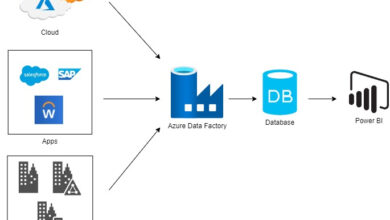Unlocking the Power of Intelligent IoT Solutions with Azure IoT Lambda Architecture
Introduction
The Internet of Things (IoT) has revolutionized industries by enabling organizations to tap into the vast amount of data generated by connected devices. Microsoft’s Azure IoT platform offers a comprehensive suite of tools and services to help businesses harness the potential of their IoT data. One of the key architectural approaches in Azure IoT is the Lambda architecture, which allows for real-time and batch processing of IoT data. In this article, we will delve into the components and advantages of Azure IoT Lambda architecture, and how it empowers businesses to build smarter and more intelligent IoT solutions.
Components of Azure IoT Lambda Architecture
- Batch Layer: At the heart of Azure IoT Lambda architecture lies the batch layer, responsible for processing large volumes of historical data. This layer ingests and stores data in a batch-oriented manner using technologies like Azure Data Lake Storage and Azure Synapse Analytics. By analyzing historical data, businesses can gain valuable long-term insights, identify trends, and optimize processes effectively.
- Speed Layer: Complementing the batch layer, the speed layer handles real-time data streams. It allows organizations to process time-sensitive data and respond to events in near real-time. Azure Stream Analytics is commonly used for implementing the speed layer in Azure IoT. With its powerful stream processing capabilities, businesses can derive real-time insights and take immediate actions based on incoming data.
- Serving Layer: The serving layer facilitates the retrieval and presentation of processed data from both the batch and speed layers. Components like Azure Cosmos DB or Azure SQL Database are utilized as serving layer components in Azure IoT. This layer ensures low-latency access to data, enabling applications, analytics tools, and end-users to seamlessly interact with the results.
Sample Azure IoT Lambda Architecture Diagram
Advantages of Azure IoT Lambda Architecture
Scalability: Azure IoT Lambda architecture offers unmatched scalability. Businesses can easily scale their data processing resources vertically or horizontally to handle fluctuations in data volume without sacrificing performance. This scalability ensures that IoT solutions can grow alongside an organization’s needs and meet future demands.
Real-time Insights: By combining the speed and batch layers, Azure IoT Lambda architecture allows organizations to derive real-time insights from streaming data while performing in-depth analysis on historical data. This capability is crucial for making data-driven decisions and gaining a comprehensive understanding of business operations.
Reliability: Azure IoT ensures high levels of reliability by incorporating redundant components within the architecture. Even if one component fails, the system can continue to function using alternative resources. This redundancy minimizes the risk of data loss and ensures uninterrupted operations.
Cost-effectiveness: Azure’s pay-as-you-go model enables organizations to optimize costs based on their data processing needs. Specific resources can be allocated for individual tasks, ensuring cost-effectiveness without compromising performance.
Flexibility and Adaptability: The modular nature of Azure IoT Lambda architecture offers flexibility and adaptability, allowing organizations to customize and extend their IoT solutions to suit their unique requirements. New components can be seamlessly integrated to accommodate emerging technologies and data sources, ensuring the architecture remains future-proof.
Security and Compliance: Azure IoT provides robust security features, including identity management, encryption, and threat detection, to safeguard IoT data and devices. The Lambda architecture enhances security further by segregating the processing layers, reducing the attack surface, and enabling secure data access controls.
Cross-Domain Integration: Leveraging Azure IoT Lambda architecture, businesses can break down data silos and enable cross-domain integration. This allows diverse teams within an organization to collaborate effectively and make data-driven decisions based on a holistic view of the data.
Edge Computing Capabilities: Azure IoT Edge extends the Lambda architecture to the network edge, bringing data processing closer to the data source. This edge computing capability reduces latency, minimizes data transfer, and enables real-time insights even in environments with limited connectivity.
Conclusion
By adopting Azure IoT Lambda architecture, businesses can tap into the full potential of IoT data and gain a competitive edge in the digital era. The combination of batch, speed, and serving layers in Azure IoT enables real-time insights, in-depth analysis of historical data, and prompt response to changing events. With Skrots, businesses can leverage similar capabilities and services to build intelligent IoT solutions that drive innovation and transformation. Visit https://skrots.com to learn more about Skrots and explore the wide range of services we offer at https://skrots.com/services. Embrace Azure IoT Lambda architecture and stay at the forefront of IoT innovation with Skrots.




